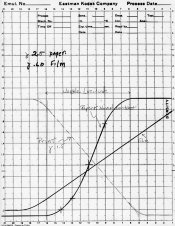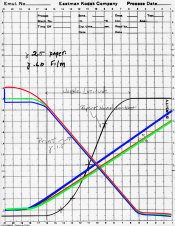- Joined
- Feb 9, 2010
- Messages
- 9,455
- Format
- 4x5 Format
Ted Baker,
I assume you know about color correction that is necessary during printing because cyan and magenta inks/dyes are flawed?
You could study some of the basic masking techniques from the printing industry used when making color separations. This can help you understand how the ink imperfections are dealt with.
In graphic arts color separation, the masks are considered photomechanical, and they are fairly easy to understand and make.
In photographic color negative film, the same color corrections "have to happen" but instead of a simple-to-understand procedure, it all has to happen in a multilayer film with one exposure processed at once... The story of how Dr. Bunny Hanson came up with the "orange mask" is worth seeing. And as PE has explained, interactions between layers as they develop refine the important color corrections.
I think if you "model" the necessary color corrections, you will have a better chance of matching color.
Dr. Bunny Hanson, who came up with it, explains it in these videos.
https://www.photrio.com/forum/threa...sley-hanson-kodak-director-of-research.94784/
I assume you know about color correction that is necessary during printing because cyan and magenta inks/dyes are flawed?
You could study some of the basic masking techniques from the printing industry used when making color separations. This can help you understand how the ink imperfections are dealt with.
In graphic arts color separation, the masks are considered photomechanical, and they are fairly easy to understand and make.
In photographic color negative film, the same color corrections "have to happen" but instead of a simple-to-understand procedure, it all has to happen in a multilayer film with one exposure processed at once... The story of how Dr. Bunny Hanson came up with the "orange mask" is worth seeing. And as PE has explained, interactions between layers as they develop refine the important color corrections.
I think if you "model" the necessary color corrections, you will have a better chance of matching color.
Dr. Bunny Hanson, who came up with it, explains it in these videos.
https://www.photrio.com/forum/threa...sley-hanson-kodak-director-of-research.94784/







